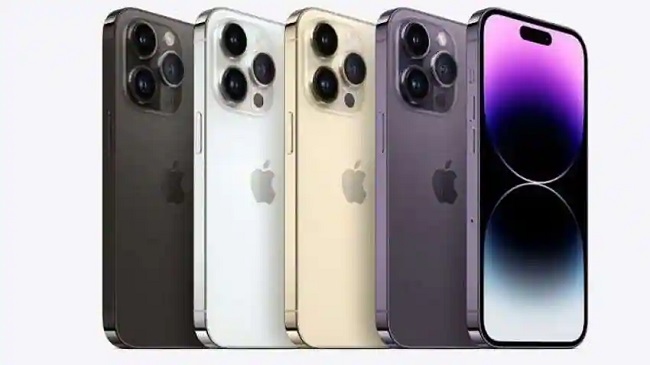For power users, I suggest the iPhone pro Max 14. Why? Furthermore, you get the greatest cameras I’ve tested in a smartphone, a brand-new always-on screen, and a clever Dynamic Island that eliminates the notch in favour of a smaller area that constantly updates you on new notifications and live events.
All You Need To Know iPhone 14 Pro Max
The camera’s new Action mode for recording video was a lot of fun to experiment with as well. Even while other smartphones offer a comparable capability, the combination of the iPhone 14 Pro Max’s excellent video quality and its incredibly steady filming makes the device feel almost magical.

Some may be disappointed by the lack of a real SIM card slot, but the flagship’s eSIM capability makes switching between numerous phone numbers a breeze.
Review of the iPhone 14 Pro Max, Including Pricing and Availability
The iPhone 14 Pro Max has been available since September 16 and is officially on sale. One of the priciest flagship phones available, with a starting price of $1,099/£1,199/AU$1,899.
The base storage still still has 128GB, which isn’t very Pro if you ask me. While 128GB comes standard, 256GB is available for an additional $1,199 (£1,309/AU$2,099). Upgrading to 512GB will set you back $1,399 (£1,529/AU$2,419), while 1TB will set you back $1,599 (£1,749/AU$2,769).
iPhone 14 Pro Max Design
For this review, I used an iPhone 14 Pro Max, and right once I observed two problems. The first is the elimination of the notch in favour of a pill-shaped cutout (read on for more information about the Dynamic Island), and the second is the enlargement of the camera bump.
The three camera lenses and flash on the rear of the iPhone 14 Pro Max are significantly larger in comparison to previous iPhones. In comparison to its predecessor, this model is noticeably bulkier and heavier. The iPhone 14 Pro Max is 8.47 ounces in weight and measures 6.33 x 3.05 x 0.31 inches, which is a slight increase from the iPhone 13 Pro Max’s 8.46 ounces and 6.33 x 3.07 x 0.3-inch dimensions.
The iPhone 14 Pro Max comes in four different hues: space black, silver, gold, and a deep purple. For this review, I tried out both shades, but my personal favourite is the deep purple because it really stands out. The sleek glass back and color-matched polished steel sides of Apple’s Pro phones are features I continue to adore.
The same IP68 water resistance is present alongside an exquisite design that may be a little too familiar. Where is it lacking? The SIM card slot, if you will. Apple, following suit with the removal of the headphone jack, has eliminated this functionality from U.S. models in favour of eSIM technology.
The good news is that the iPhone 14 Pro Max makes adding a new line simple, and it supports simultaneous use of two phone lines (say, one for your personal number and one for business). However, not all international carriers offer eSIM just yet, so it’s important to double-check if yours is compatible before jetting off.
Screen quality and always-on functionality of the iPhone 14 Pro Max
When it comes to the always-on display, Apple is clearly playing catch-up with Android phones with the iPhone 14 Pro, but Apple’s implementation still gives a more full experience, provided you’re willing to put in the time to set it up.
Apple made its AOD to look like the lock screen (in colour) but dimmed down significantly because the refresh rate of the iPhone 14 Pro Max’s display can scale all the way down to 1Hz. This means that you won’t miss out on your wallpaper or the widgets like the weather, calendar, and activity ring that you use on your lock screen.
When you put the iPhone 14 Pro Max in your pocket or turn it over on a table, the always-on screen automatically turns off. I found it convenient to be able to see the time without turning on the screen completely, as my dogs always take that as a sign that they can go outdoors no matter how late it is.
Otherwise, the Super Retina XDR display on the iPhone 14 Pro Max is stunning in its brightness and colour accuracy. In reality, the maximum brightness of this panel is rated at 1,600 nits when used with HDR content and 2,000 nits when used outdoors in direct sunshine.
When I panned in closer to a video of a fountain, this panel sparkled because I could make out individual water droplets hitting the pool below and generating a bubbly mass of bubbles. Also, the 120Hz ProMotion display made me feel like I was in a tropical paradise when playing the air shooting game AirTwister.
We measured a maximum of 1,565 nits on the iPhone 14 Pro Max while viewing HDR video in our lab, which is extremely close to Apple’s claim. In terms of colour gamut, this panel measured at 117.5% for sRGB and 83.2% for DCI-P3. The colour accuracy was measured at 0.26 on the Delta-E scale, where 0 represents perfection.
We measured a maximum of 1,040 nits on the iPhone 13 Pro Max, and the device scored 109.3 percent on the sRGB test and 76.4 percent on the DCI-P3 test, respectively. Overall, the iPhone 14 Pro Max has a better display than the iPhone 13 Pro Max, however its Delta-E rating of 0.21 is lower.
Cameras Quality:
With the introduction of the iPhone 14 Pro Max, Apple has shaken up the camera department by including a 48MP main wide sensor. By default, the sensor will combine adjacent pixels into larger “quad” pixels, allowing for more efficient light collection at 12 megapixels.
However, if you need the highest possible resolution for cropping, you can shoot in 48 megapixels when using the Pro RAW mode. You don’t get the higher zoom afforded by the Galaxy S22 Ultra’s 10x dual optical setup, but the 48MP camera does enable a new 2x zoom option that joins the 12MP 3x telephoto zoom lens.
The iPhone Pro Max has a faster f/1.9 aperture for improved low-light photographs, in addition to a new 12MP ultrawide camera that’s nearly double the size. In fact, the A16 Bionic chip powers a Photonic Engine that’s meant to improve low-light performance across the board, resulting in brighter and more vivid photographs from every camera.
To take images with a resolution of 48 megapixels, you must turn on Apple ProRaw and set the ProRaw resolution to 48 megapixels in the camera’s settings. Once enabled, switching between RAW and regular photos may be done directly within the camera app, which is why it’s recommended to do so.
I was able to go a lot closer to the fire pit in my 48MP photo without any loss of quality. The bricks and lights above the circular wall are clearer. Keep in mind that for the greatest results, you’ll want to modify the photographs afterward.


